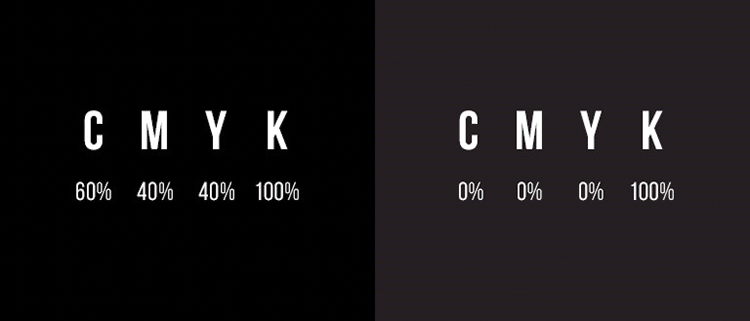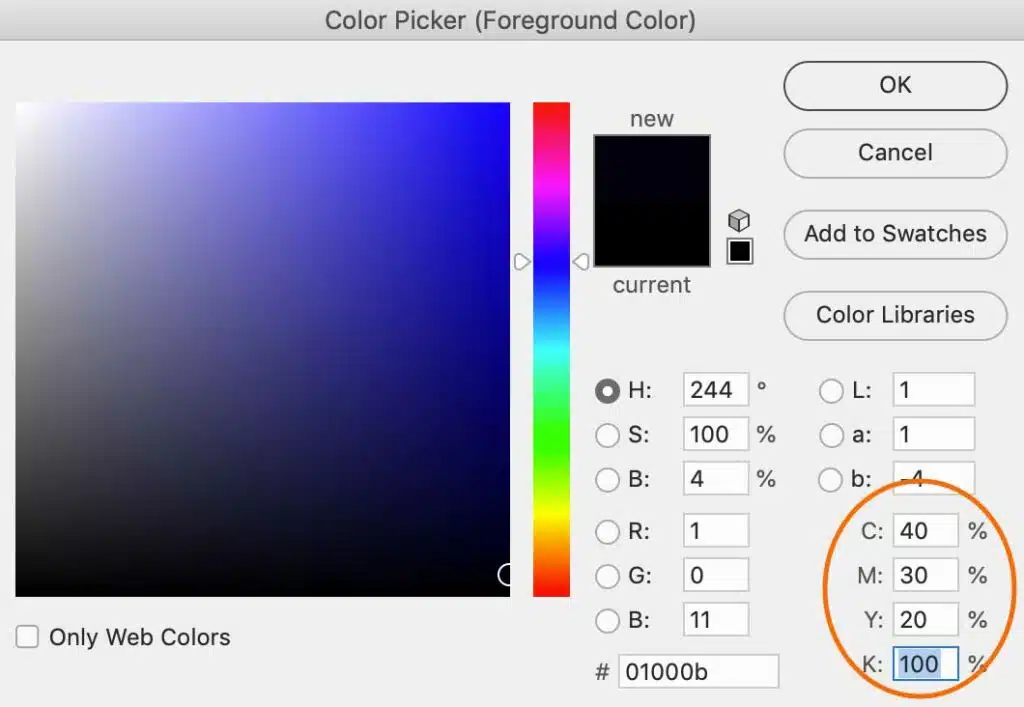
Many graphic designers, illustrators, and artists struggle with faded black and colors when printing artwork with a commercial printer. How do you make sure your blacks are richer?
In printing, “rich black” refers to a deep, intense black color achieved by using a combination of multiple inks (typically, Cyan, Magenta, Yellow, and Black – CMYK) rather than just the standard Black (K) ink. The goal of rich black is to produce a darker, fuller black, which can create a more visually striking result, especially in large areas of black or dark tones.
Rich black is achieved by blending the black ink with other colors, typically in the following way:
Cyan, Magenta, Yellow, and Black (CMYK): A common recipe is 100% Black (K), 60% Cyan (C), 40% Magenta (M), and 40% Yellow (Y). This blend increases the depth and density of the black.
Pantone-based Rich Black: Some specialized rich blacks are based on specific Pantone formulations for particular printing methods.
Why Faded Blacks Occur
Faded blacks, or dull blacks, can happen for several reasons:
Ink Saturation: If only black ink (K), it can appear faded or weak, especially in large print areas, because it’s difficult to saturate paper with just one ink (black).
Paper Quality: Poor-quality paper can absorb ink unevenly, leading to lighter blacks.
Ink Drying: On certain papers, ink may dry too quickly, causing it to look less intense than expected.
Incorrect Printing Settings: Incorrect printer profiles, improper ink ratios, or low-quality print settings can result in faded or washed-out blacks.
How to Overcome Faded Blacks
To achieve rich and deep blacks in printing, follow these strategies:
Use a Rich Black Formula: Rather than picking pure black ink (100% K), blend it with cyan, magenta, and yellow. A typical rich black formula is 100% K, 60% C, 40% M, and 40% Y. This formula helps achieve a deeper, fuller black. Multiple formulas like this can also be utilized. However, this example is the most common solution for gaining rich black with home and commercial printers.
Increase Ink Coverage: Make sure there is enough ink to cover the area thoroughly. This may require adjusting your printer settings to avoid ink starvation on large black areas. This occurs more at home than at commercial print companies.
Choose the Right Paper: Using high-quality, smooth paper will result in richer, deeper blacks. Coated papers often work best for achieving deep, consistent color reproduction.
Avoid Over-Saturation: Do not over-saturate areas with ink, as it can lead to problems like smudging or uneven drying. Ensure proper ink balance for clarity and vibrancy.
Proper Printer Calibration: Ensure your printer is properly calibrated with the right color profiles. This helps to avoid issues where ink is not mixed or applied correctly, leading to faded blacks.


